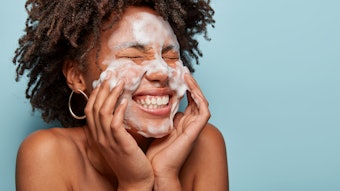
AI is the latest unknown at the forefront of many industries. While it offers high efficiency and endless possibilities for innovation, there is some fear surrounding its use. Many are concerned, for example, that AI will take the jobs of humans; others are worried about the implications it has in media production and plagiarism.
Log in to view the full article
AI is the latest unknown at the forefront of many industries. While it offers high efficiency and endless possibilities for innovation, there is some fear surrounding its use. Many are concerned, for example, that AI will take the jobs of humans; others are worried about the implications it has in media production and plagiarism.
Thus far, AI in cosmetics and personal care has largely been used by consumers for skin analysis. Or, by R&D for ingredient and formula testing to minimize time-consuming data sorting for formula optimization and other means. But to learn about its greater potential, Cosmetics & Toiletries (C&T) spoke with a few companies that are already using it.
Here, they detail how they are applying AI, how think it should be viewed and potential future steps. Insights are provided by Pierre Salvy (PS), of Cambrium; Pippa Harman (PH), of Renude; and Mallika Tiwarrii (MT) and Montserrat Franco (MF), of BASF.
C&T: When did you start using AI in your business?
PS: Pretty much since day one. There was this vision from the beginning: can we use AI to have a sustainable impact in biotech? That quickly translated into using AI to design biomaterials, which turned into us designing our first product [with AI] – Novacoll.
Don't be surprised when I tell you it's basically [used in] R&D. The idea is, every time you make an experiment in real life, it’s way more expensive than if you run it using a computer, so we really use computational methods to [reduce the risk in] our R&D pipeline. AI is one of our … tools that allows us to design for maximal efficiency and scalability for products…
C&T: How do you want to see AI portrayed and marketed in the media?
PS: I want more articles about demystifying [AI]. Like right now, it still very much has the status of black magic. My grandma, when I told her about ChatGPT and she tried it, she was like, “I forgot to be nice to them!” [I was thinking], “it’s not a real person, you know.”
I think what’s important is to educate the consumers on what it is; and really, what it is is statistically [creating] an answer generator. Like ChatGPT, as an example, if you have an answer that looks like it has been written by a human, it will never optimize for truth [or] accuracy; it will optimize for how likely it is you certify it is being written by human. If more people understand this, then I think we’ll have a better grasp on how to use it properly.
C&T: How does your business incorporate AI? (Research, consumer, etc).
PH: [AI has] always been core to our vision at Renude. We launched in 2020 … and we’ve always been working toward the AI that we now have. Obviously the first aspect of any AI is to collect the data and then label the data in a meaningful way so you can train algorithms to build AI. Those are the phases we’ve gone through and now we have proprietary AI that's been built on all the data that’s been collected over the past three years.
We have two sides of our AI. The first is computer visions and skin diagnostics. It analyzes selfie images taken on mobile phones to detect the presence and severity of a range of common skin concerns. We have 25 different concerns that sit within the key categories like acne, aging, pigmentation and redness sensitivity. We use computer vision to create an extremely granular profile of the skin and discern which symptoms are present and at what severities; and that creates an outpost, which we then apply machine learning to provide a step-by-step skin care routine.
[It’s sort of] a two-fold process. One is looking at the recommendations we’ve made since we’ve launched our very first MVP [(Minimal Viable Programming)]; so we have licensed estheticians who’ve made all the recommendations since day one, which has created our dataset in terms of which products are recommended to which customer profile. We also have an ingredients lair so our technology understands ingredients within a product … [to] automatically analyze its suitability both for active performance based ingredients and also texture and preference factors as well.
C&T: What is the next step for AI in the industry?
PH: I feel like the beauty industry has been very slow to adopt technology across the board and I think even moving online has been quite recent. I think the pandemic forced [many] companies that were mostly reliant on retail sales … [to] improve their online channels and I think that change has pushed … consumers to shopping online, whereas previously they were having an omnichannel experience, where they’d look at reviews online but go to the store to try. … [N]ow it feels like … sales are happening online.
Now there’s [much] more opportunity for AI applications, so I think recommendations and diagnostics is just a big one. We work with beauty partners as well as license our services and technology to help brands and customers navigate their [options]. I think everyone we speak to is looking at how they can do this – [use] AI to match the customer with the right product or ingredient. … I think the advice component is another thing that’s really interesting.
C&T: Why did you decide to start incorporating AI?
MT: It was a very interesting two-pronged approach; one was for our internal teams and one was to serve our customers better. We wanted to incorporate AI [for a few reasons]. One of them was to gain consumer and market insight [by using] … AI-optimized algorithms to analyze what is being said on social media by consumers [and] what are the changing needs of the consumers in the personal care space. So we integrated information from social media data, consumer product data, market data – all of that to help support with idea generation of the brand.
…The other [part] was finding sustainable emollient mixes [or] finding sustainable surfactant replacement[s]. [So], one is for market insights on the product development side and the other is for formulation development and coming up with formulating an interesting product and making that process faster. The AI-based product that we have, what it can essentially do is it can identify the right emollients, it can help find emollient mixes – all the things you do in the lab. It’s a digital arm extension of that, so it only makes the process more efficient and [decreases] time to market. It can do a lot of things. Our teams internally use it and we also offer it to our customers as an AI-based digital service.
C&T: Where do you see AI going in the future?
MF: It is important to understand that these tools are shortening the time of response we are giving to our customers. What we are seeing is that the customers are also asking for that human connection. “I have this base formula but I want to talk to your technical service to review [and] go more in depth, to understand what is happening with this formula and what is happening when I am formulating or mixing these products.”
So it's not that we are forgetting about the human connection, it means that we can go a little bit deeper with our customers in some very, very detailed questions that they have about our ingredients. I think even AI is increasing the communication and dialogues that we’re having with our customers. It's very interesting – it’s not shortening, it's even broadening the communication.











